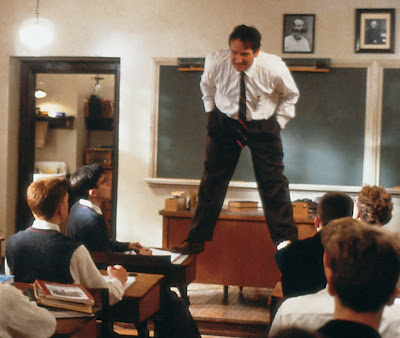Let's assume that the SEC cheats as badly as everyone thinks. Does that cheating really affect the B1G?
If Alabama "buys" a player, they are outbidding Auburn for a southern kid ... and Auburn is outbidding LSU for another southern kid ... and LSU is outbidding Tennessee for someone else from down south. Very few kids are heading to SEC schools from outside of the region, so the SEC is not "stealing" a lot of talent from the Big Ten (or from anywhere else for that matter). If they are cheating at all, then the SEC schools are stealing from one another. The internecine recruiting wars in the Deep South should not really affect the schools outside of that region.
In the 2014 recruiting class, 132 high school prospects signed with the traditional SEC powers - Alabama, Auburn, Florida, Georgia, LSU, and Tennessee - and 106 (or 80.3%) were from the deep south (Florida, Georgia, South Carolina, Alabama, Mississippi, Tennessee, Louisiana, Arkansas, Texas). Here's how each school recruited:
Alabama: 22 signees, 16 from Deep South
Auburn: 18 signees, 17 from Deep South
Florida: 23 signees, 17 from Deep South
Georgia: 19 signees, 17 from Deep South
LSU: 23 signees, 21 from Deep South
Tennessee: 27 signees, 18 from Deep South
Not surprisingly, Tennessee, being the most northern school and having a coach with northern ties, had more recruits from outside of the SEC region. Alabama, with its recent success, was able to sign six players from outside of the region, including the #1 OC, the #3 DE, the #4 OG, and the #7 QB.
Here's a complete list of SEC signees from outside of the Deep South, with Scout position rankings:
Atlantic Coast Region (ACC)
#4 QB Davidson NC (Florida)
#4 TE Charlotte NC (Georgia)
#13 DT Fayetteville NC (Georgia)
#17 RB Havelock NC (Tennessee)
#61 CB Greensboro NC (Tennessee)
#3 DE Woodbridge VA (Alabama)
#5 OC Max Meadows VA (Tennessee)
#33 TE Elkton MD (Tennessee)
#5 CB Washington DC (Florida)
#24 CB Washington DC (Tennessee)
Midwest Region (Big Ten)
#5 TE Minster OH (Tennessee)
#41 WR Cincinnati OH (Alabama)
#72 DE Shaker Heights OH (Tennessee)
#1 MLB Plainfield IL (LSU)
#3 TE Chatham IL (Tennessee)
#16 DE O'Fallon IL (Tennessee)
#4 OG Cedar Falls IA (Alabama)
#1 OC Woodbury MN (Alabama)
Great Plains Region (Big 12)
#1 OG Olathe KS (Auburn)
#17 TE Derby KS (Florida)
#7 QB Norman OK (Alabama)
#15 DE Oklahoma City OK (LSU)
Elsewhere
#23 DT Brooklyn NY (Florida)
#44 OT Tucson AZ (Florida)
#64 OT Casper WY (Florida)
NR P Denver CO (Alabama)
To recap, the SEC powers signed 132 high school prospects in 2014, 106 from the deep south (80.3%); 10 from the Atlantic Coast (7.6%); 8 from the Midwest (6.1%); 4 from the Great Plains (3.0%); and 4 from the other parts of the country (3.0%).
The SEC is not hurting the B1G in terms of numbers of recruits signed, but SEC teams are grabbing some top talent from the Midwest Region. There is no reason why the top prospects in Illinois, Iowa, and Minnesota should be heading south instead of signing with their hometown schools.
The bigger problem is that the Big Ten teams are losing dozens of top prospects to programs that have no business raiding the region for talent. Of the top 150 prospects in the Midwest, 76 signed with Big Ten schools, and 7 went unsigned. Of the remaining 67 prospects, 8 signed with Notre Dame and 8 signed with the SEC powers listed above, all of which is understandable. However, 51 prospects - more than one-third of the top high schools players in the Midwest - either signed outside the region with non-premium programs or within the region with non-B1G programs, including 9 with Kentucky, 6 with Cincinnati, 4 with Louisville, and 13 with MAC schools (7 with Western Michigan alone!). Schools like Indiana, Purdue, and Illinois will never recover if their coaching staffs keep losing players to Western Michigan.
Meanwhile in the Deep South, the SEC schools locked up 83 of the local prospects, and 20 were unsigned. Of the remaining 47 prospects, 29 signed with regional powers (11 to Miami, 11 to Florida State, and 7 to Clemson), and 18 signed elsewhere including 6 to national powers (3 to Notre Dame, 2 to Ohio State, 1 to Michigan); 8 to ACC schools (4 to North Carolina, 3 to North Carolina State, and 1 to Virginia Tech). Only 3 prospects signed to non-Power5 conferences (2 to USF, 1 to UCF); needless to say, the MAC schools signed no one from that list.



